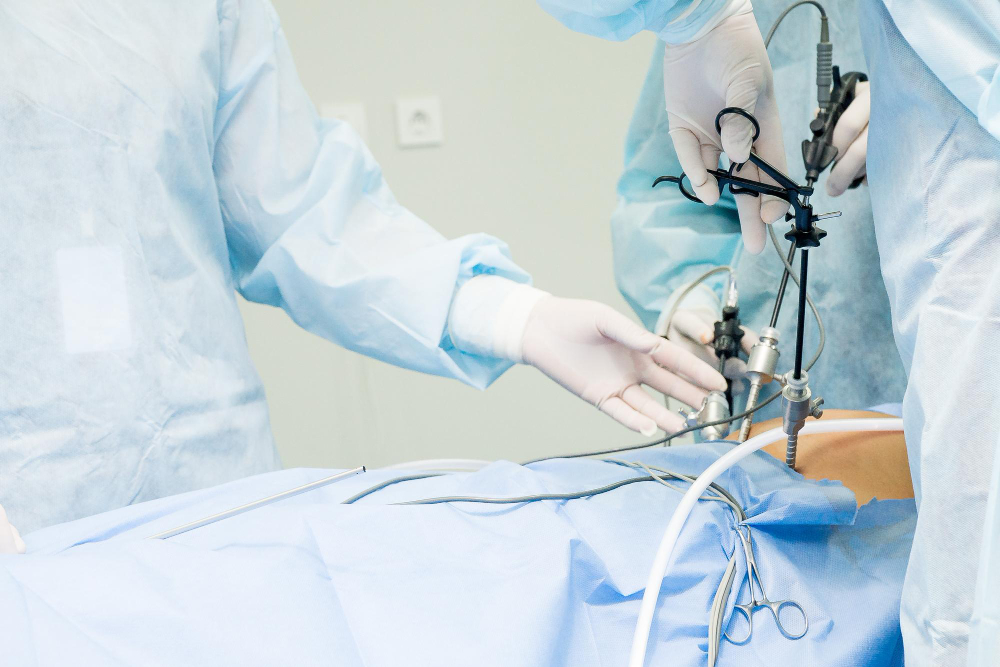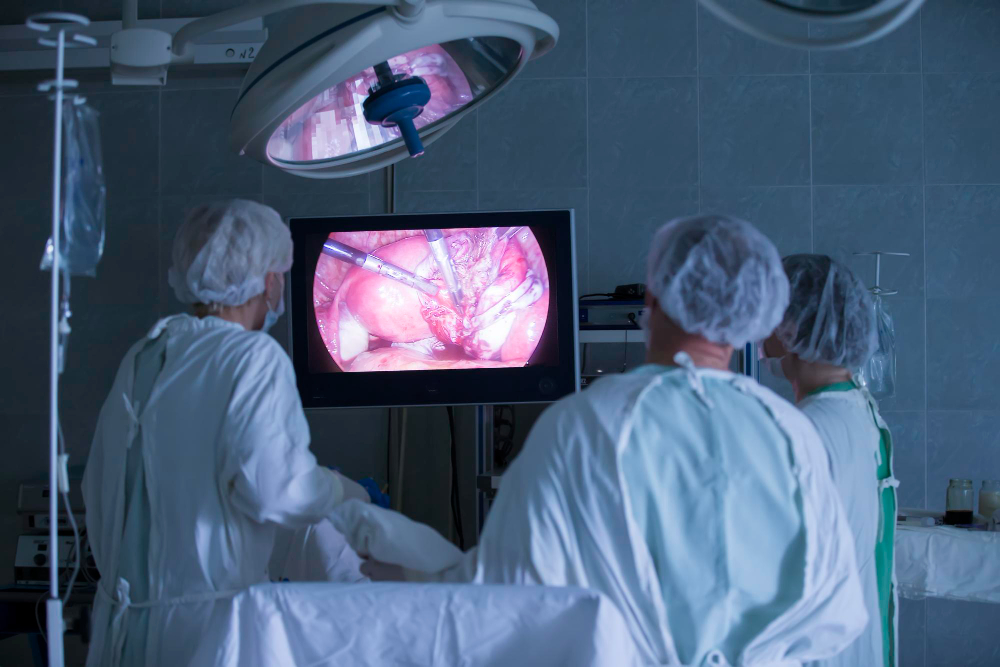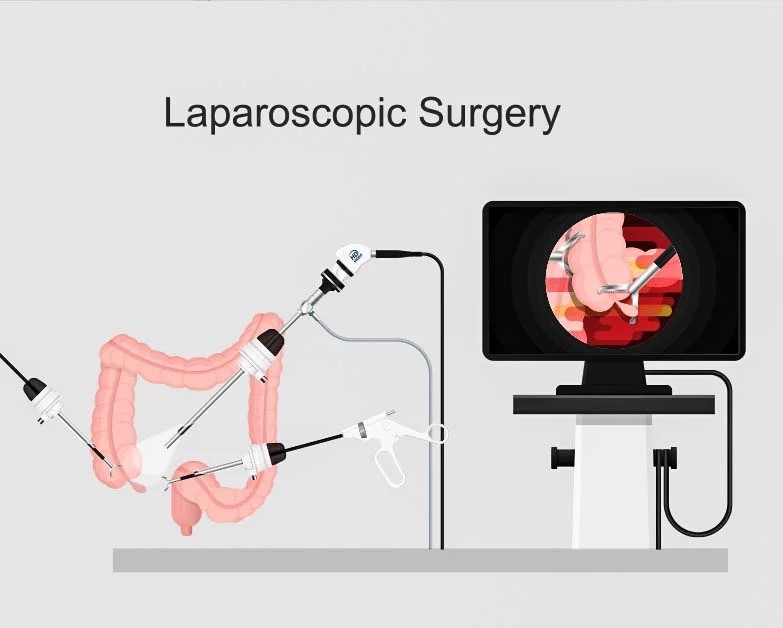Laparoscopy
A laparoscopy, also called a diagnostic laparoscopy, is a surgical procedure used to examine the organs within the abdomen and other enclosed areas, like the knees. It’s a safe and minimally invasive procedure that only requires small incisions.

In an abdominal laparoscopy, a medical professional examines the abdominal organs by using a device called a laparoscope. This device is a slender tube with a bright light and a high-quality camera located at the front. It is inserted into the abdomen through a cut in the abdominal wall, and as it progresses, the camera transmits images to a computer screen.
A laparoscopy enables the doctor to visually explore the inside of your body without the need for extensive surgical cuts. Additionally, this procedure allows for the collection of biopsy samples and the possibility of performing surgical interventions.
When laparoscopy is used
Laparoscopy is a medical technique that aids in the identification of various conditions that occur within the abdomen or pelvis. Additionally, it can be utilized for surgical purposes, such as the extraction of an injured or diseased organ, as well as obtaining a tissue sample for additional examination.
Laparoscopy is most commonly used in:
- The field of gynaecology focuses on understanding and managing health issues that impact the female reproductive system.
- The field of gastroenterology involves the examination and care of disorders that impact the digestive system.
- Urology refers to the examination and management of issues that impact the urinary system.
Benefits
There are various benefits to working in this manner when compared to traditional surgery, primarily due to the reduced amount of cutting involved.
- You have smaller scars.
- You get out of the hospital quicker.
- You will experience reduced pain as the wounds heal, and the healing process will be faster.
- You can resume your usual activities at an earlier time.
- You may have less internal scarring.
Let me give you an illustration. If you choose conventional approaches, you would typically stay in the hospital for about a week or even longer for an intestinal surgery, and the complete recovery process might take around 4 to 8 weeks. However, if you opt for laparoscopic surgery, you would only need to spend 2 nights in the hospital and recover within 2 or 3 weeks. Additionally, a shorter hospital stay usually results in lower costs.

What is the procedure for conducting an abdominal laparoscopy?
A laparoscopy is typically conducted as an outpatient surgery, allowing patients to return home on the same day of the procedure in most instances. This procedure can be performed either in a hospital or an outpatient surgical facility.
For this surgery, it is probable that you will be administered general anesthesia. This entails being in a state of sleep throughout the procedure and usually not experiencing any pain. To administer general anesthesia, a needle will be inserted into one of your veins to establish an intravenous (IV) line. This enables your anesthesiologist to administer specific medications and also keep you hydrated by providing fluids through the IV.
In the process of laparoscopy, the surgeon creates a cut beneath your navel and introduces a small tube referred to as a cannula. This cannula is utilized to fill your belly with carbon dioxide gas, which facilitates improved visibility of your abdominal organs for the doctor.
After your belly is filled with gas, the doctor puts the laparoscope into the cut. The laparoscope has a camera that shows live images on a screen, so that your internal organs can be seen in the moment.
The quantity and dimensions of the cuts are determined by the particular illnesses your surgeon is trying to verify or exclude. Typically, you will have one to four cuts that are approximately 1 to 2 centimeters long. These cuts enable the insertion of other instruments.
To illustrate, the surgeon may require a different surgical instrument for carrying out a biopsy. In the process of a biopsy, a small portion of tissue is extracted from an organ for evaluation purposes.
Once the procedure is completed, the tools are taken out. Next, your cuts are sealed using either stitches or surgical tape. Bandages might be applied over the cuts.
After the procedure

After the treatment, you might experience slight discomfort around the incisions. There is a possibility of feeling pain in your shoulder as well, which can be attributed to the gas pressure in your abdomen.
You might experience drowsiness and possibly nausea, however, these symptoms should be temporary. Once you spend a few hours recuperating, it is probable that you will be discharged with guidelines on handling any pain, dressing, or stitches you may have. Additionally, you may be prescribed pain relief medication.
It is not advisable to drive home after being under general anesthesia. It is recommended that you make arrangements for someone to provide transportation or assist you in getting home. It is advised to have someone accompany you for the next 24 hours to ensure your well-being is monitored.
What are the steps to recover from a laparoscopy while being at home?
When you are in the process of recuperating at your residence after undergoing a laparoscopy procedure, it is important to consider certain guidelines. Some recommendations that you should bear in mind include:
- After undergoing surgery, it is important to refrain from consuming alcohol or operating a vehicle for a minimum of 24 hours.
- You can bathe any time after surgery.
- The bandage can be taken off the day after the operation. The Steri-strips, which resemble tape, should be removed in two to three days after the surgery.
- After the surgical procedure, you can usually resume work within three days. In case you require a letter from a doctor to excuse your absence from work, kindly ask for one during your pre-operative appointment.
- There is no need to worry if your urine appears green. It could be a result of using blue dye during a procedure to test the openness of your fallopian tubes.
Treatment in Türkiye:
The medical staff of surgical teams, doctors and consultants in Rehab Türk can provide the best treatment options and free consultations – by striving to keep abreast of the latest medical technologies and methods.
